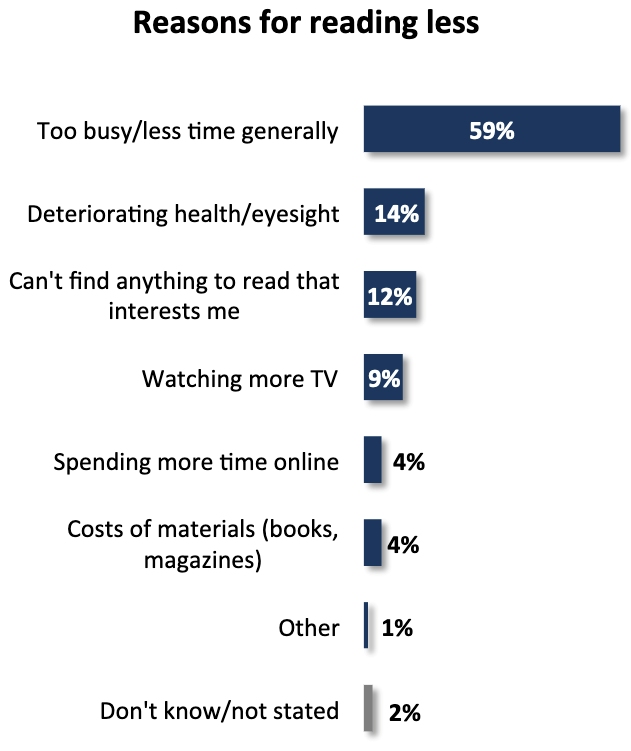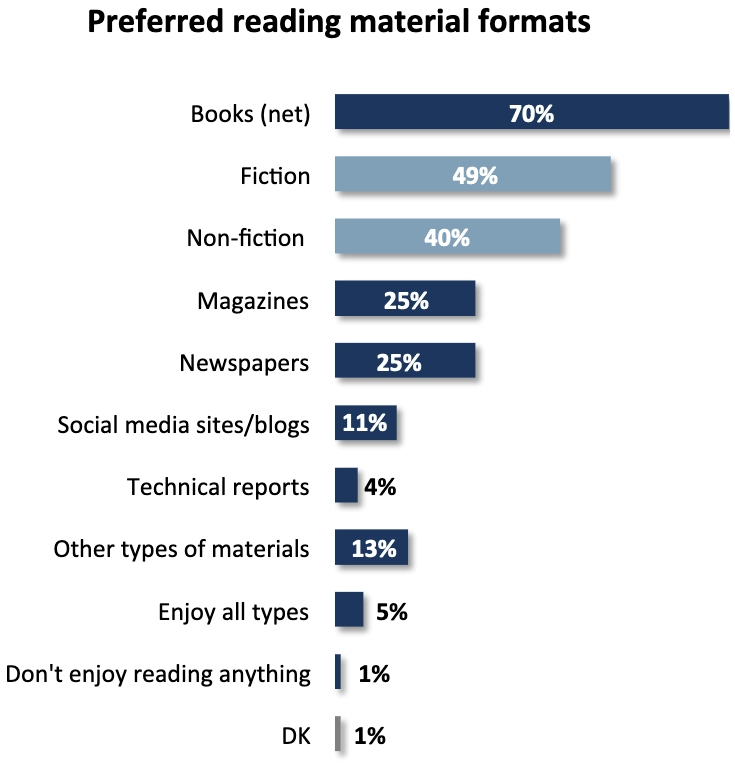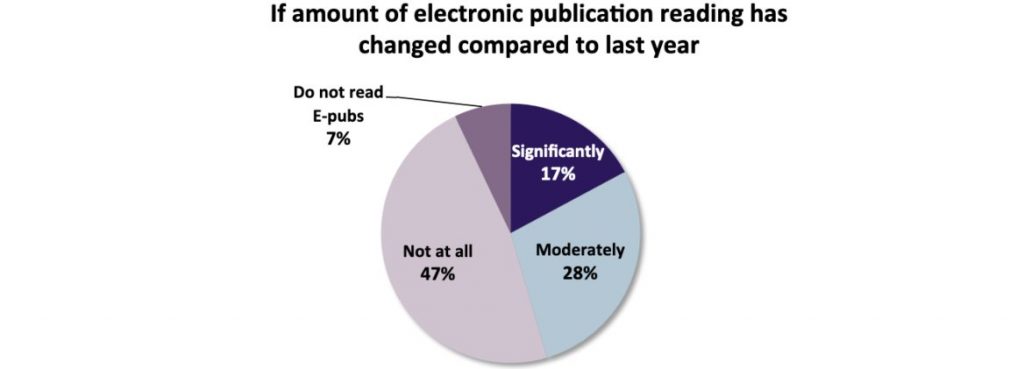Research Summary
The primary goal of this research was to collect benchmark data regarding the volume and nature of Canadians’ pleasure reading habits. To achieve this, a telephone survey was conducted from October 8th to October 17th, 2013, involving 1,001 adult Canadians aged 18 years and above. The margin of error for a sample of this magnitude is approximately ±3.1 percentage points, with a 95% confidence interval (“19 times out of 20”). Quotas were implemented to ensure that the regional, age, and gender composition of the sample aligns with the actual population based on the most recent Census information available.
Q1. Do you engage in pleasure reading, which refers to reading done for personal enjoyment rather than work or educational purposes?
Comparing the amount of pleasure reading to the previous year, six out of ten Canadians indicate that their reading habits remain relatively unchanged. Among adult Canadians, 60% report no change in the amount of pleasure reading they engage in. Additionally, 20% claim to read more than they did the previous year, while 10% read less. Only 5% of respondents mention that they do not partake in pleasure reading at all.

When examining responses across different regions and population subgroups, the trend of reading about the same amount as the previous year is dominant throughout the country. However, it is most prevalent in the Atlantic region, where 73% of respondents fall into this category. Moreover, individuals aged 30 and above (66%) show a higher inclination to maintain their reading habits compared to younger Canadians (45%). Notably, there are no distinct patterns among subgroups indicating a decrease in reading compared to the previous year. Nonetheless, men (7%) exhibit a slightly higher proportion of not reading for pleasure at all compared to women (4%). Furthermore, individuals with less than a high school diploma (15%) are more likely to fall into the category of not reading for pleasure, but they are also the group most likely to report increased reading (29%).
Q2. Why do you read for pleasure less than you used to?

Among those who reported reading for pleasure less than the previous year (N=112), the reasons for this decline were explored. A majority of individuals (59%) attribute it to a general lack of time. Other reasons cited include deteriorating health or eyesight (14%), inability to find interesting reading material (12%), increased television consumption (9%), and spending more time online (4%). Some respondents mentioned costs associated with reading materials such as books or magazines (4%), while a small portion offered other individual reasons (1%). It is important to note that caution should be exercised when interpreting these results due to the small subgroup sizes of individuals reading less for pleasure than before. Overall, the responses tend to align with the general population. Deteriorating health or eyesight is more prevalent among individuals aged 60 and above, while younger Canadians are more likely to attribute it to being too busy.
Q3. What formats of reading material do you prefer the most?
(Note: When respondents were asked, they were informed that books, magazines, newspapers, etc., could include both print and online or Kindle versions.)

The preferred format for reading material, whether in print or electronic form, is books. Seventy percent of Canadians express a preference for books, with 49% specifically indicating a preference for fiction and 40% for non-fiction. Magazines and newspapers are each preferred by approximately one-quarter of respondents. Other formats, such as social media sites/blogs, technical reports, and various other materials, are preferred by less than 10% of participants. Books remain the favoured format across the country and most demographic subgroups. However, residents of Quebec are somewhat less likely to mention a preference for fiction books (39%) compared to other regions (52%). Women (78%) show a higher preference for books compared to men (61%), particularly in the realm of fiction (55% vs. 42%). In Vancouver, fiction books are more popular (63%) compared to Montreal (36%) and Toronto (45%). Men also exhibit a higher likelihood of expressing a preference for social media sites or blogs (16% vs. 7%). Notable differences in format preference exist based on age. Older Canadians (aged 60 and above) are more inclined to prefer newspapers (39%), while individuals between the ages of 18 and 29 are more likely to prefer social media sites or blogs (22%) or fiction books (59%). Preferences for social media sites and fiction books are associated with having at least a high school diploma or higher education, as well as being a student.
Q5. Has your consumption of electronic publications increased compared to one year ago?

When asked about changes in their reading of electronic publications compared to the previous year, nearly half of adult Canadians (47%) stated that their consumption has remained unchanged. Of the remaining respondents, 17% report a significant increase, while 28% indicate a moderate increase. Only 7% mention that they do not read electronic publications at all. The responses are consistent across the country, but there are noteworthy differences based on age and gender. Men (21%) and individuals under the age of 45 (22%) are more likely to report a significant increase in reading electronic publications compared to women (14%) and older Canadians (14%). Furthermore, those with a household income over $100,000 and individuals with a college or university education are more likely to report at least a moderate increase.


